- Home
- Isaac Hooke
Alien War Trilogy 3: Titan Page 2
Alien War Trilogy 3: Titan Read online
Page 2
At first they had set the simulator to select random environments for their war scenarios, but after entering the alien home system, and obtaining actual telemetry on the planet, they had switched exclusively to an environment matching the surface of the alien homeworld. The simulator had even accounted for the extra bulk required in the torso region for the radiation armor—he had had the involved technicians tweak the thickness and center of gravity of the virtual mechs until every platoon member piloted an exact replica of his particular Titan—so that by the time each of them had stepped into their real-life war machines, they already had the necessary muscle memory. The only difference between the simulator and reality was the methane snow, which had been colored yellow in the simulations, not white.
As for the armaments on the Titan class, they proved a hybrid between the Zeus and Hoplite. Swivel mounts available on each arm allowed the pilot to cycle between two kinds of weapons, unique to each arm. The right hand could switch between a “zodiac” lightning thrower and a grenade launcher, while the left had the choice of a “cobra” laser or an incendiary thrower. The latter had its own fuel supply so that it didn’t draw from the jumpjet supply; it also utilized an oxidant to ensure the weapon could fire even in void conditions, however the oxygen content of the alien atmosphere was sufficient for any produced flames to continue burning, though probably not for very long in the current weather.
Each swivel mount also had the prerequisite empty position to allow the pilots to manipulate objects with the fingers of their mechs when the weapons weren’t needed. This enforced some limitations. It meant a Titan couldn’t climb while armed, for example: the weapons would have to be swiveled away to allow the fingers to attain handholds. Not a big deal, perhaps, but the extra time needed to arm a weapon could mean the difference between life and death during a battle. In the simulator Rade had “died” a few times in the climbing scenarios, simply because he couldn’t arm himself fast enough when an attack came.
Like the Zeus, a missile launcher was mounted on each shoulder, though these could each hold eight of the Hellfire H-7B minis, rather than five, giving every Titan a total complement of sixteen rockets. Those Hellfires also exposed a potential vulnerability: because the rockets were more powerful than the H-7 versions, if detonated prematurely, they also more easily damaged the mechs that wielded them. During the war games, it had become a favorite tactic of his to target the missile launchers of the opposing team, because striking just one H-7B in the tip with a laser would usually cause a cascade explosion involving the whole cluster. The resulting detonation was almost one hundred percent guaranteed to disable the involved mech, sometimes killing the simulated operator in the process.
As for the defensive capabilities, both arms had retractable ballistic / anti-laser shields available; each shield only covered roughly seventy five percent of the mech when deployed, but they could be stacked one atop the other if necessary to achieve full coverage. The familiar Trench Coat anti-missile countermeasure system was also available, and each mech carried enough charges packed into the launch cones rimming the torso for eight usages.
A new defensive countermeasure had been retrofitted into these particular models to offset the horde attacks witnessed in previous engagements. Called the Lighter, when activated any creatures or robots touching the hull would be jolted with upwards of one million volts, depending on the number of enemies and whether other objects grounded the hull. Lying down would cause less voltage to be discharged versus standing up, for example, and ten enemies would receive less volts between them than three. The recharge interval was one minute, and the Lighter couldn’t be activated during the interim period.
Because of the extra weight required by the armor and all those armaments, the jumpjet fuel burn rate was significantly higher than a Zeus or Hoplite. Also, the maximum running speed was roughly three-fourths that of a Zeus, at forty-five kilometers an hour, or roughly as fast as a pedal-bike traveling down a moderate hill. The shoulder missile mounts could be jettisoned to improve both statistics, as could the incendiary thrower and its fuel supply, however the other weapons were bolted into place and could only be swapped out in dry dock or the equivalent, though in a crunch they could probably be forcibly ripped away.
Lui was the first to reach Rade, followed by Fret.
“Not much of an extermination force, are we?” Lui said.
“We’re the exterminators who were exterminated,” Fret said.
“We haven’t been exterminated.” Bender arrived. “What the frick you talking about, bitch?”
“You’re a bitch,” Fret said.
“Bender is right,” Rade said. “Our mission is still a go as far as I’m concerned.”
“How can it be a go?” That was Manic. He was still a hundred meters out. “We’ve been shot down. We’re cut off from communications with the fleet and the landing party. We have no way to signal the bombers if we come upon any substantial enemy force.”
Rade sighed. “Well, for the time being, we’re going to proceed to the original drop point. That much of the mission is still a go. The chief will expect us to meet him there.”
“If he and the others survived,” Manic said.
“They survived,” Rade said.
“Whatever you say, boss,” Manic replied.
“Uh, how exactly do you plan to navigate to the drop point in the first place?” Fret said. “We’ve got no positional satellites in orbit. Nor any drones or other air support overhead. At least none that can punch through the interference down here. Our overhead map contains only the topography we ourselves have generated from our own cameras, limited as they are in this piss-storm.”
“Go ahead and explain it to him, Jerry,” Rade said.
Jerry spoke over the main comm: “I have calculated the position of the target site based on the acceleration vector employed by the drop ship before it lost all positional data feeds due to ballistic impact; as part of my computations, I have factored in acceleration due to gravity, the additional drag and air friction imparted by the damaged structure of the craft, and the effects of the wind based on the pitch, yaw and roll recorded by my internal gyroscope during the flight, using data from when the positional feed was still operational as a basis, and my internal accelerometer data thereafter. This data has allowed me to calculate the deviation of the drop craft from its original course after we were blown apart, all the way to when we ejected and landed. I have come up with our most probable landing site, and plotted a course to the original target.”
“Well ain’t you the smart one,” Bender said.
Rade put the calculated drop site up on his map and transmitted it to his platoon mates.
“Whoa,” Manic said. “That’s far.”
That was an understatement. The calculated site was roughly one hundred and sixty kilometers away to the northwest. The main nuclear impact zone was forty kilometers due north of the site, where one of the alien dome cities had purportedly been located. The nuke bombardment formed a wide trench about eighty kilometers long and four kilometers wide to the next city—the two cities were supposedly connected by underground tunnels, and the Brass, in their infinite wisdom, decided to detonate digger nukes all along the length of said tunnel. He doubted the senior command really knew whether the tunnel even existed at all, but if it did, there were likely many other tunnels branching away from the main that remained untouched. The long trench was visible on the map as a large black valley—the data had been uploaded to their mechs before the drop.
“No way that drop site is accurate,” Tahoe said. “There are too many factors involved.”
“It is accurate,” Rade said. “It will have to be. Because it’s all we have.”
“What’s the margin for error?” Lui asked.
“Go ahead, Jerry,” Rade said.
“Plus or minus ten kilometers.”
“Seems a little low, considering,” Lui said.
“Low?” Fret said. “That means the actual dro
p site is basically within a twenty kilometer diameter, or an area of over three hundred kilometers. Pi r squared, people.”
“We’re going to have to split up and traverse the area in a search grid, obviously,” Lui said. “It won’t take that long to find signs of the staging area. Especially if we use kilometer-wide separations. We’ll probably spot air support forty klicks out anyway.”
“Assuming anyone else made it down alive,” Fret said. “And that visibility gets back to normal at some point.”
“All right, that’s enough negativity for the moment,” Rade said. “The other members of Alpha Platoon are going to meet us at the drop site. They have survived. I don’t want to hear anything more on the subject. And visibility will improve. Eventually.”
When everyone had closed to within thirty meters, Rade had them trudge northwest. To start with, Tahoe was on point, Grappler on drag, and Rade in the middle as dictated by the safety protocols that went with being LPO.
He used an ordinary single-file marching formation, since the overwatch variations weren’t of much use in those conditions. He did maintain a separation of ten meters between mechs, enough for him to see all the Titans ahead and behind on the thermal band. They marched in a straight line so that the following mechs could trudge more easily in the man-sized footprints created by the lead Titan. They took turns at the grueling point position.
They couldn’t hit the top speed of forty-five kilometers per hour in those conditions. No, they averaged ten klicks per hour at best. Anything over that and the point man was liable to trip—it was difficult to clear the top layers of the heavy snow, which would catch at the ankles at the faster speeds. That ruled out any sprinting. At ten kilometers per hour, the estimated time to the drop site was sixteen hours.
They were protected from the cold, of course—the inner environment of their jumpsuits maintained a comfortable temperature, abetted by the cockpit heaters and the body heat produced by their own movements.
As Rade advanced through the white monotony, that formless limbo stretching from horizon to horizon, faces sometimes seemed to coalesce momentarily within the swirling snow. They weren’t of anyone he knew, nor even human really, but ghostly approximates. Without fail their expressions seemed malevolent and accusing, as if blaming Rade for the crash of the drop ship.
Maybe it was my fault, somehow.
He sighed. Of course it wasn’t. But as the commander, the man solely responsible for the well-being of his men, it was only natural to assume that somehow he had committed some grave error.
Don’t worry, you haven’t made a mistake yet.
You have the entire mission for that.
And he knew quite well that trusting the calculations of his AI could be the first.
three
Over time the snow grew deeper, so that it swallowed the Titans to the thighs instead of the knees, reducing their speed to eight kilometers an hour. An hour later, the storm began to abate very slightly, enough that Rade and his men could actually see twenty meters ahead or behind on the visual band.
“You know, I’ve been thinking...” Manic said at one point.
“Bad idea,” Bender said. “You and thinking don’t mix.”
“Funny. But listen. We were supposed to nuke the major population centers, and all the defenses that come with those centers, right? But we’ve seen how well that worked out. As in, it didn’t.”
“Anti-aircraft batteries are definitely a bitch when they don’t go down,” Lui agreed.
“Anyway,” Manic said. “I think Rage was right.”
“About what?” Rade said.
“During our mission briefing,” Manic replied. “He expressed some concern regarding the reliability of the information obtained from the interrogation of enemy captives, and the partially-converted ‘Half Hosts’ used to corroborate said information. You were right, boss. What we extracted from the enemy wasn’t worth a damn.”
“Either that,” Lui said. “Or the enemy had warning of our intentions, and moved their bases before we arrived.”
“That’s certainly a viable possibility,” Manic agreed. “Because think about it for a second. Those Half Hosts were supposed to be able to tap in to the communications between full hosts, right? But maybe it worked both ways, and the full hosts could read them right back. In fact, they almost certainly could, but the Half Hosts just didn’t know it. Makes perfect sense. I’ll bet our nukes missed the population centers entirely.”
“What none of you have considered yet,” Tahoe said. “Is that the enemy might have evacuated the planet entirely, leaving behind only a token defense force. If you had advance warning of an extinction-level attack, wouldn’t you?”
“You’re assuming they had enough ships to evacuate,” Lui said.
“You saw all those dodecahedrons in orbit,” Tahoe said. “I’d guess each one could hold up to three or four thousand evacuees.”
“Fine,” Lui said. “But you’re also assuming that the population estimates gleaned by the so-called Half Hosts were even remotely correct.”
“Wait a second,” Keelhaul said. “Back up for a minute. The fleet launched telemetry drones shortly after we secured the Slipstream. And we scanned the planet from orbit again immediately before the nuclear attack. We confirmed where their bases were before a single nuke was launched.”
“Did we?” Manic said. “That’s what we all want to believe. But what if the scan results proved inconclusive, and the senior command thought, ‘hell with it, we’re launching the attack anyway.’ You know how warlike some of the generals and admirals can be. This far away from UC space, cut off from contact with the commander-in-chief until the return Gate can be built, it would have been an easy decision for them.
“And here’s something else for you to chew on. You know that telemetry information can be faked remotely, right? All it requires is the careful placement of thermal energy sources and LIDAR reflectors. Remember, these beings have captured and converted human beings. Hundreds of them: likely almost all one thousand of the civilians who were left stranded at Radiance, and at least several dozen Marines. Not to mention one of our own chief scientists. They know everything we know. And they know how to trick our sensors and telemetry drones. Of course they were prepared for our attack. It’s naive to think otherwise.”
“If what you’re saying is true,” Grappler said. “Then that means we could be stranded on a fully populated, fully defended alien homeworld, without backup or support of any kind.”
“Kind of brings new meaning to the phrase, ‘behind enemy lines,’ don’t it?” Bender said.
“Yeah, sure,” Grappler said. “What do you do when the whole friggin planet is your enemy?”
“All right,” Rade said, not wanting the morale to drop off a precipice. “That’s enough speculation for the time being. Because the truth is, we don’t know exactly how strong the enemy is. And we don’t need to know. All we need to focus on right now is getting to the drop point.”
“You still think our mission is a go, boss?” Bender said.
“I’ll decide when we get to the drop point,” Rade said. “Now quiet on the comms. Please.”
They continued the tedious march for the next thirty minutes. The blizzard subsided further, and visibility actually improved to about a kilometer. Not that they could see anything but plain white out there. If there were any hollows or protrusions in the landscape, the snow veiled it well.
Unfortunately, in another thirty minutes the wind picked up even more violently than before, with the blowing snow becoming so thick that even the thermals were obfuscated down to the level of twenty meters. Rade ordered the separation between mechs reduced to five meters. They walked against the gusting wind, the average speed of the bulky mechs reduced to five kilometers an hour.
“If the snow keeps up at this rate,” Grappler said. “We’ll be buried up to our torsos.”
“Actually, I think the snow stopped,” Fret said.
“What are you
talking about?” Grappler said. “I can’t see a thing in this whiteout.”
“No, I’m serious,” Fret said. “As far as I can determine it, the wind is just blowing the top layers back into our faces.”
“Well that’s... just... wonderful.”
Fret seemed right, in that the blizzard was apparently formed of blowing snow, because the depth never changed. It continued to swallow them to the thighs and no higher. Well, that wasn’t entirely true: they did come upon deeper drifts piled in hollows and against outcrops that slowed them down considerably. They sometimes were forced to utilize their zodiacs to clear a path, expediting their advance through such terrain. The cobra lasers shot too narrow a beam to be of much use.
Some of the platoon mates tried incendiaries in such areas—you’d think with all that methane and oxygen floating about, it would be disastrous conditions for a fire. Not the case... whatever molecules were bound to the methane produced a tight bond, and because of the cold, very few of them were actually liberated. It was like trying to spray water-based snow with a flamethrower—sure the snow melted, and sure the jellied gasoline continued to burn in place for a few minutes, but the fires didn’t spread. In the end, it proved a waste of incendiary fuel, so the platoon members resorted to zodiacs instead.
Speaking of the zodiacs, the plasma channels formed by the electrolasers were diminished: instead of producing large, arcing lightning bolts with multiple tines, the zodiacs discharged thin, sickly single-pronged bolts. Rade blamed it on the atmospheric content, and the temperature.
The mechs themselves held up well in the frigid weather. Which was expected: Titans were rated for the cold of deep space operation, after all. Sometimes a servomotor would seize, and a platoon member would have to heat it with a burst from his incendiary. Once, Grappler had to dismount, braving the blizzard in his jumpsuit to tighten a loose bolt in the armor jury-rigged to his torso. He was only exposed for about a minute, but the magnetic fields of his jumpsuit protected him from receiving too much radiation. Other than that, the platoon members suffered no lasting mechanical failures.

 Warden 2
Warden 2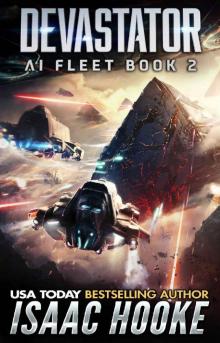 Devastator
Devastator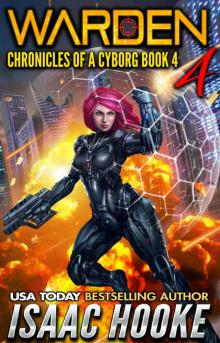 Warden 4
Warden 4 Emperor
Emperor Mech
Mech Conqueror
Conqueror Fighter
Fighter The Forever Gate Ultimate Edition
The Forever Gate Ultimate Edition Defiler
Defiler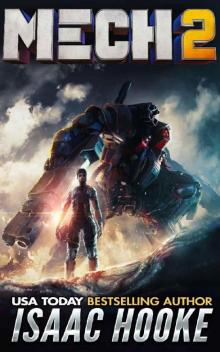 Mech 2
Mech 2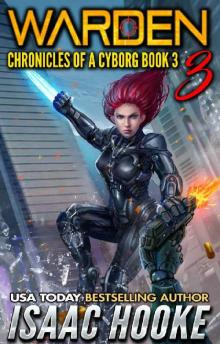 Warden 3
Warden 3 Warden 1
Warden 1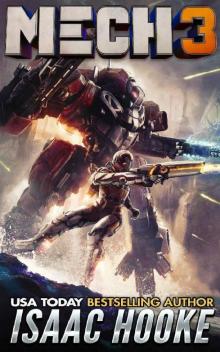 Mech 3
Mech 3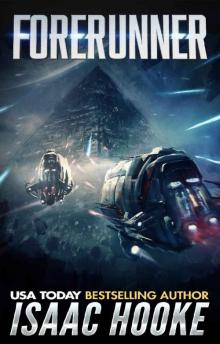 Forerunner
Forerunner The Alliance (AI Empire Book 2)
The Alliance (AI Empire Book 2) Breaker (Monster Tamer Book 1)
Breaker (Monster Tamer Book 1) Bender of Worlds
Bender of Worlds The Pendulum Swings (The Forever Gate Book 8)
The Pendulum Swings (The Forever Gate Book 8)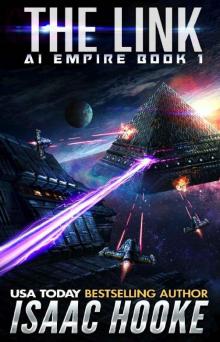 The Link
The Link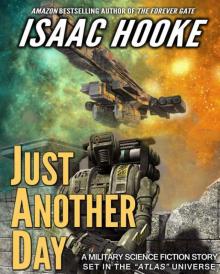 Just Another Day
Just Another Day Star Warrior
Star Warrior Alien War Trilogy 1: Hoplite
Alien War Trilogy 1: Hoplite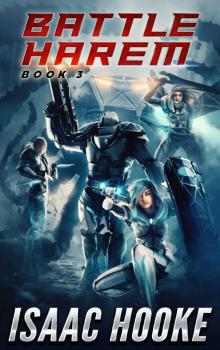 Battle Harem 3
Battle Harem 3 The Ethan Galaal Series: Books 1 - 3
The Ethan Galaal Series: Books 1 - 3 Reloaded
Reloaded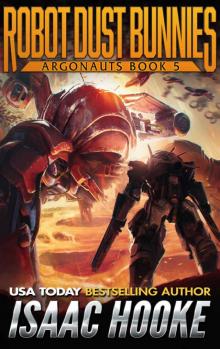 Robot Dust Bunnies (Argonauts Book 5)
Robot Dust Bunnies (Argonauts Book 5) Battle Harem
Battle Harem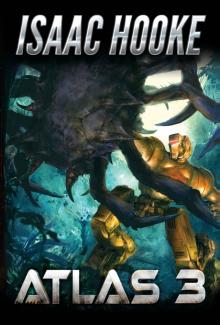 ATLAS 3 (ATLAS Series Book 3)
ATLAS 3 (ATLAS Series Book 3)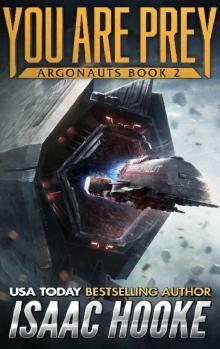 Argonauts 2: You Are Prey
Argonauts 2: You Are Prey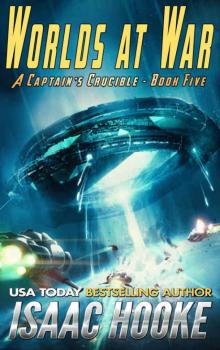 Worlds at War (A Captain's Crucible Book 5)
Worlds at War (A Captain's Crucible Book 5)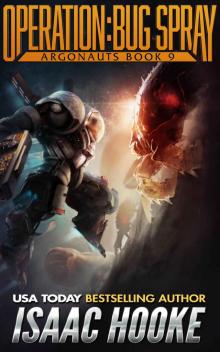 Operation: Bug Spray (Argonauts Book 9)
Operation: Bug Spray (Argonauts Book 9) Battle Harem 2
Battle Harem 2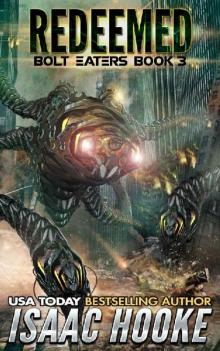 Redeemed (Bolt Eaters Trilogy Book 3)
Redeemed (Bolt Eaters Trilogy Book 3)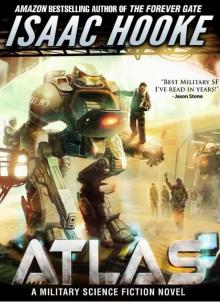 Atlas
Atlas Argonauts 1: Bug Hunt
Argonauts 1: Bug Hunt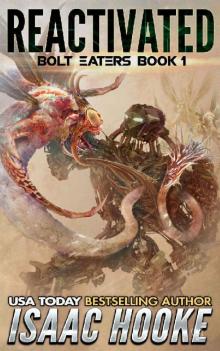 Reactivated (Bolt Eaters Trilogy Book 1)
Reactivated (Bolt Eaters Trilogy Book 1)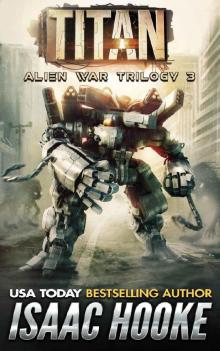 Alien War Trilogy 3: Titan
Alien War Trilogy 3: Titan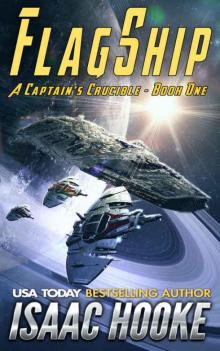 Flagship (A Captain's Crucible #1)
Flagship (A Captain's Crucible #1)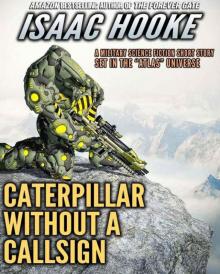 Caterpillar Without A Callsign
Caterpillar Without A Callsign The Forever Gate
The Forever Gate He Who Crosses Death (Star Warrior Quadrilogy Book 3)
He Who Crosses Death (Star Warrior Quadrilogy Book 3) Reforged (Bolt Eaters Trilogy Book 2)
Reforged (Bolt Eaters Trilogy Book 2) Refurbished
Refurbished Reloaded (AI Reborn Trilogy Book 2)
Reloaded (AI Reborn Trilogy Book 2) He Who Crosses Death
He Who Crosses Death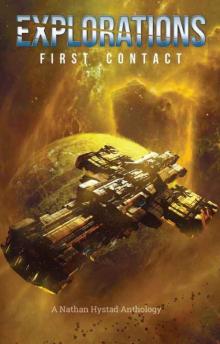 Explorations: First Contact
Explorations: First Contact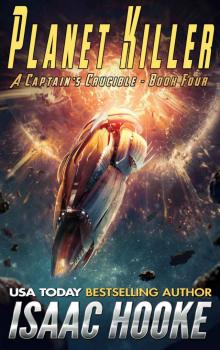 Planet Killer (A Captain's Crucible Book 4)
Planet Killer (A Captain's Crucible Book 4)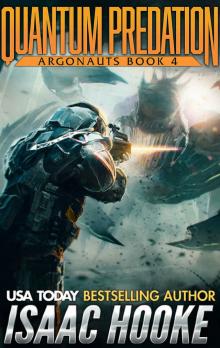 Quantum Predation (Argonauts Book 4)
Quantum Predation (Argonauts Book 4) Clandestine-IsaacHooke-FreeFollowup
Clandestine-IsaacHooke-FreeFollowup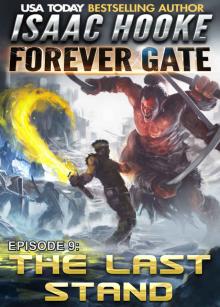 The Last Stand (The Forever Gate Book 9)
The Last Stand (The Forever Gate Book 9)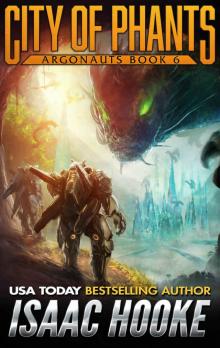 City of Phants (Argonauts Book 6)
City of Phants (Argonauts Book 6)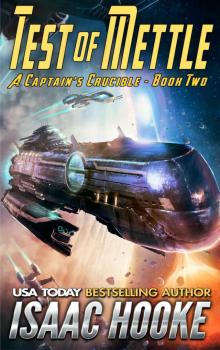 Test of Mettle (A Captain's Crucible Book 2)
Test of Mettle (A Captain's Crucible Book 2)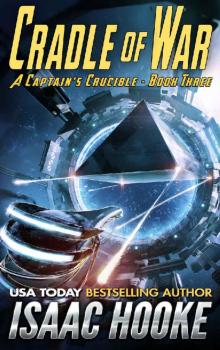 Cradle of War (A Captain's Crucible Book 3)
Cradle of War (A Captain's Crucible Book 3)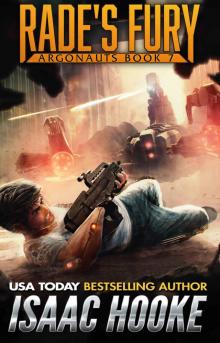 Rade's Fury (Argonauts Book 7)
Rade's Fury (Argonauts Book 7) Rebirth (The Forever Gate Book 6)
Rebirth (The Forever Gate Book 6) The Forever Gate Compendium Edition
The Forever Gate Compendium Edition Mechs vs. Dinosaurs (Argonauts Book 8)
Mechs vs. Dinosaurs (Argonauts Book 8)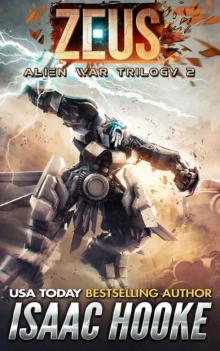 Alien War Trilogy 2: Zeus
Alien War Trilogy 2: Zeus ATLAS 2 (ATLAS Series Book 2)
ATLAS 2 (ATLAS Series Book 2)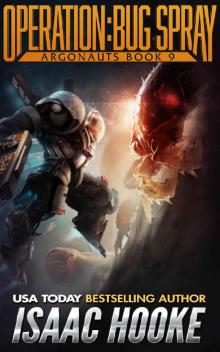 Operation_Bug Spray
Operation_Bug Spray